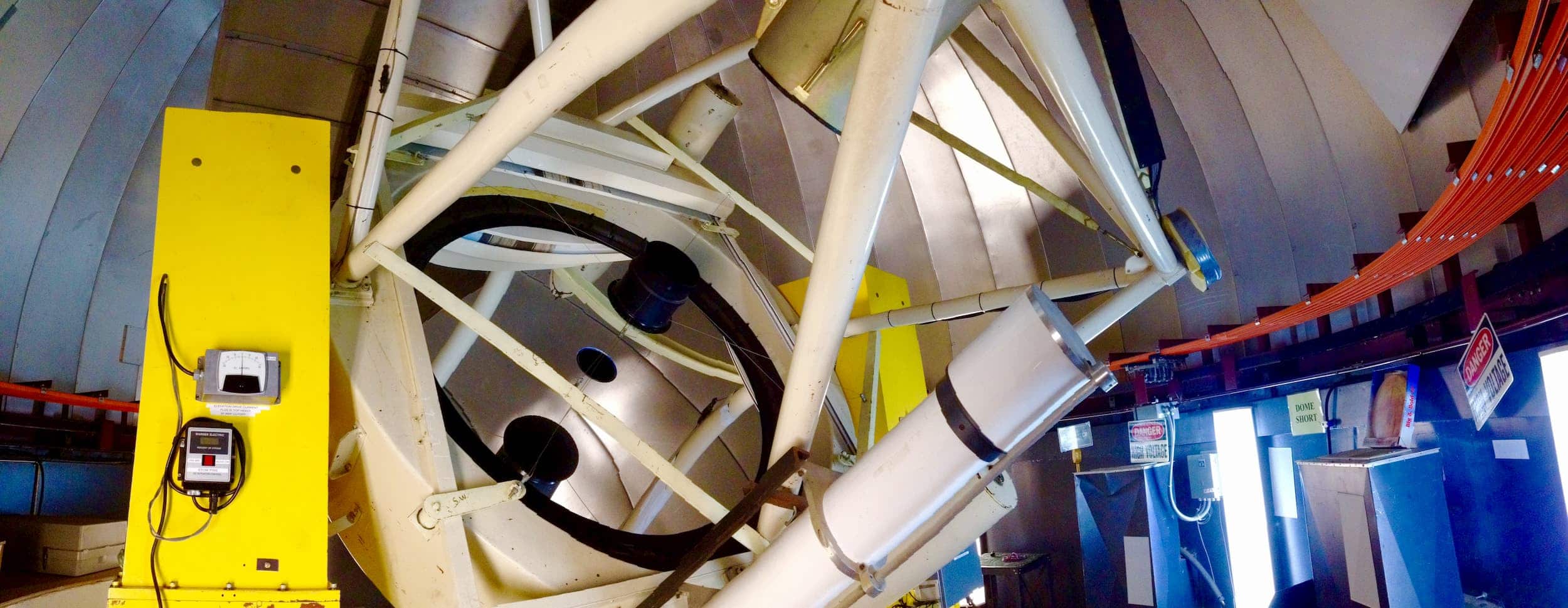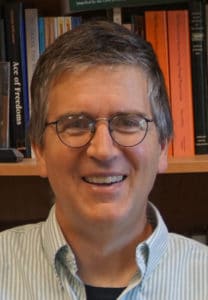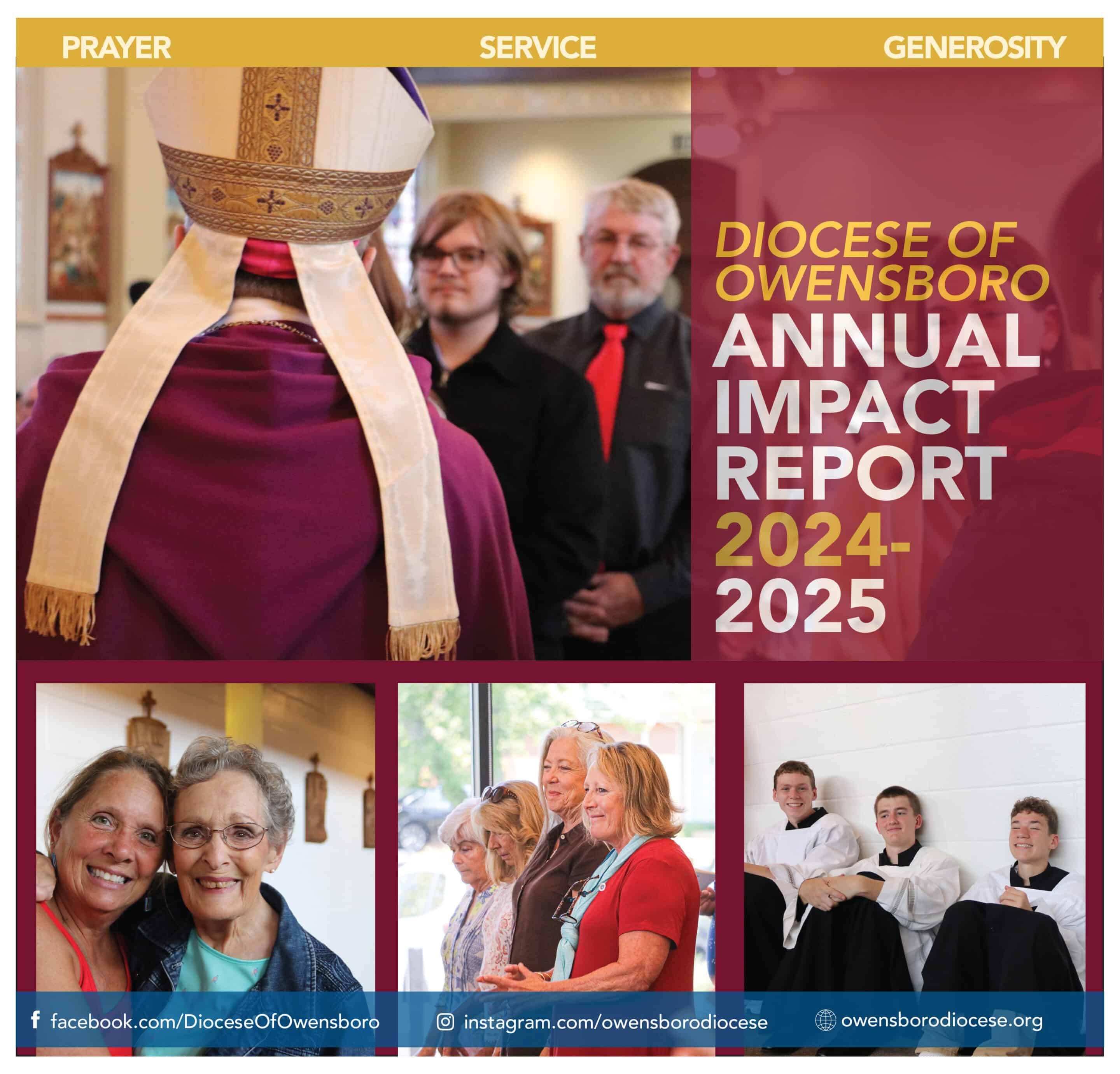
The Vatican Advanced Technology Telescope (Alice P. Lennon Telescope), inside its dome on Mt. Graham in Arizona. COURTESY OF VATICAN OBSERVATORY
Faith and science: Allied in seeking the truth
A conversation with OCHS ’84 alumnus and Vatican Observatory member Christopher M. Graney
BY ELIZABETH WONG BARNSTEAD, THE WESTERN KENTUCKY CATHOLIC
Recently, an astronomer at the Vatican Observatory (V.O.), together with his colleagues, found a new member of the solar system, orbiting beyond the planet Neptune. This “trans-Neptunian object,” or “TNO,” is currently called “2021 XD7.” It was first observed by Fr. Richard Boyle, SJ, on Dec. 3, 2021 using the Vatican Advanced Technology Telescope (VATT) on Mt. Graham in Arizona. In light of this discovery, The Western Kentucky Catholic interviewed Christopher M. Graney, an adjunct scholar with the Vatican Observatory and a 1984 alumnus of Owensboro Catholic High School.
WKC: What was the energy like among the Vatican Observatory team when Fr. Boyle observed 2021 XD7?
Graney: There is a quotation attributed to Isaac Asimov that says, “The most exciting phrase to hear in science, the one that heralds new discoveries, is not ‘Eureka’ but ‘That’s funny…’” That is how this went. Br. Guy Consolmagno, SJ, (director of the V.O.), sent out a note on Jan. 5 describing it this way:
Fr. Rich Boyle has been at the VATT telescope since before Christmas. During his first week there, he observed nothing but gray cloudy skies; like the pandemic, it felt like the bad weather would never end. And this past weekend a dump of snow blocked the road down the mountain, so he’s been stuck there a few extra days beyond what he planned.
But… on the night of January 3, between the endless gray clouds and the snowstorm, Fr. Boyle had a night of clear and steady skies. And with that moment of clarity he was able to go back and re-observe a most curious object, moving slowly across the sky, that he had seen in a previous observing run [in early December]….
So, Fr. Boyle found something “funny,” but even after that there had to be analysis, etc. before there was any confidence about what had been found. So, there was not a big “eureka” moment of excitement and energy.

Christopher M. Graney is based in Louisville and serves as an adjunct scholar with the Vatican Observatory. COURTESY OF CHRISTOPHER GRANEY
WKC: Is 2021 XD7 the only other known TNO besides Pluto?
Graney: No, there are lots of them. In fact, this is not even the first one discovered by Fr. Boyle at the Vatican Observatory’s telescope on Mt. Graham (in 2012 he and his colleagues discovered another TNO, now called 420356 Praamzius). In a sense, TNOs are part of why Pluto is no longer called a planet — because we see there are lots of other Pluto-like objects out there. Pluto is about 1,500 miles in diameter. Another is Eris, which is similar in size. There are a lot more that are smaller. In his note Br. Guy estimated, based on the distance of TNO 2021 XD7 and the limits of what the VATT can see, that the object is quite a bit smaller than Pluto or Eris, but still at least a couple hundred miles in diameter. If that holds up, then it will be a notable body. Of course, 2021 XD7 could be extra weird: small but highly reflective, so it looks bigger than it is; or large but dark, so it looks smaller than it really is — but “weird” will be cool, too.
WKC: What is 2021 XD7 made out of?
Graney: We do not know yet. That will require analysis of its light, called “spectroscopy”; that will be done as astronomers have time. But 2021 XD7 is probably something like Pluto: a combination of some rocky material and some icy material, including stuff like methane ice, not just water ice.
WKC: Often it seems like faith and science are pitted against each other in modern culture, so it’s a big deal that a priest is the person who discovered 2021 XD7. How does this show that the Catholic Church is continuing its legacy of not only supporting but actively participating in science?
Graney: Are faith and science in fact pitted against each other? Consider, for example, the famous “Scopes Monkey Trial” of the 1920s, where a high school teacher was tried in court for teaching evolution. People know of that trial and think of it in terms of science pitted against faith. Fewer people know that the biology textbook used by Scopes promoted “eugenics,” described the poor, handicapped, and insane as “true parasites,” and stated that “if such people were lower animals, we would probably kill them off to prevent them from spreading.” Obviously, religious people of all kinds would be against anything like that, so someone might have said then, “oh, religion is against science.” But now that whole eugenics business is considered junk science, driven by people’s own prejudices as much as anything, and we associate it with the Nazis. Tales of faith and science supposedly being against each other are complicated like that.
Faith and science are allied, not against each other. Both seek The Truth. That is important in modern culture, because we are having a hard time now with what is true, and how to tell what is true; there is an idea of “my truth” or “your truth.” When people do not believe that there is “The Truth,” and that we can know it, then science is in trouble. And, science is indeed having difficulties; people only want to believe science if it agrees with their outlook. People can dismiss science because it does not always give the truth immediately and sometimes it goes really wrong (like the eugenics stuff). However, over time, with care and honest inquiry, science does lead us to true ideas. We think this in faith, too: if we have questions and we study with care and honest inquiry, we will reach true answers. The source of Truth in faith and science is the same (God).
It makes sense, then, that the Church supports and actively participates in science. Lots of Catholics, men and women, and including Church figures like priests, have contributed to science. The first asteroid was discovered by a priest, Fr. Giuseppe Piazzi. The first person to do an in-depth, long-term telescopic study of an astronomical object was a priest: Fr. Christoph Scheiner, SJ (he studied the sun). Fr. Gregor Mendel launched the science of genetics. And Fr. Richard Boyle discovered a TNO or two.
WKC: As a Catholic yourself, how does this discovery affirm your own relationship with faith and science?
Graney: This TNO Fr. Boyle discovered is a real thing. It is out there. It has properties that we do not know yet, but in science we believe they are knowable. To believe that there is a real, knowable thing out there that we can learn about, even if we can’t easily see it (and understanding that we will get some things wrong as we learn), is to believe that things are True and affirms that there is a source of Truth.
Christopher M. Graney retired from teaching physics and astronomy at Jefferson Community and Technical College in Louisville in 2020. Today, he works for the Vatican Observatory as an adjunct scholar. Learn more at www.vaticanobservatory.org.

